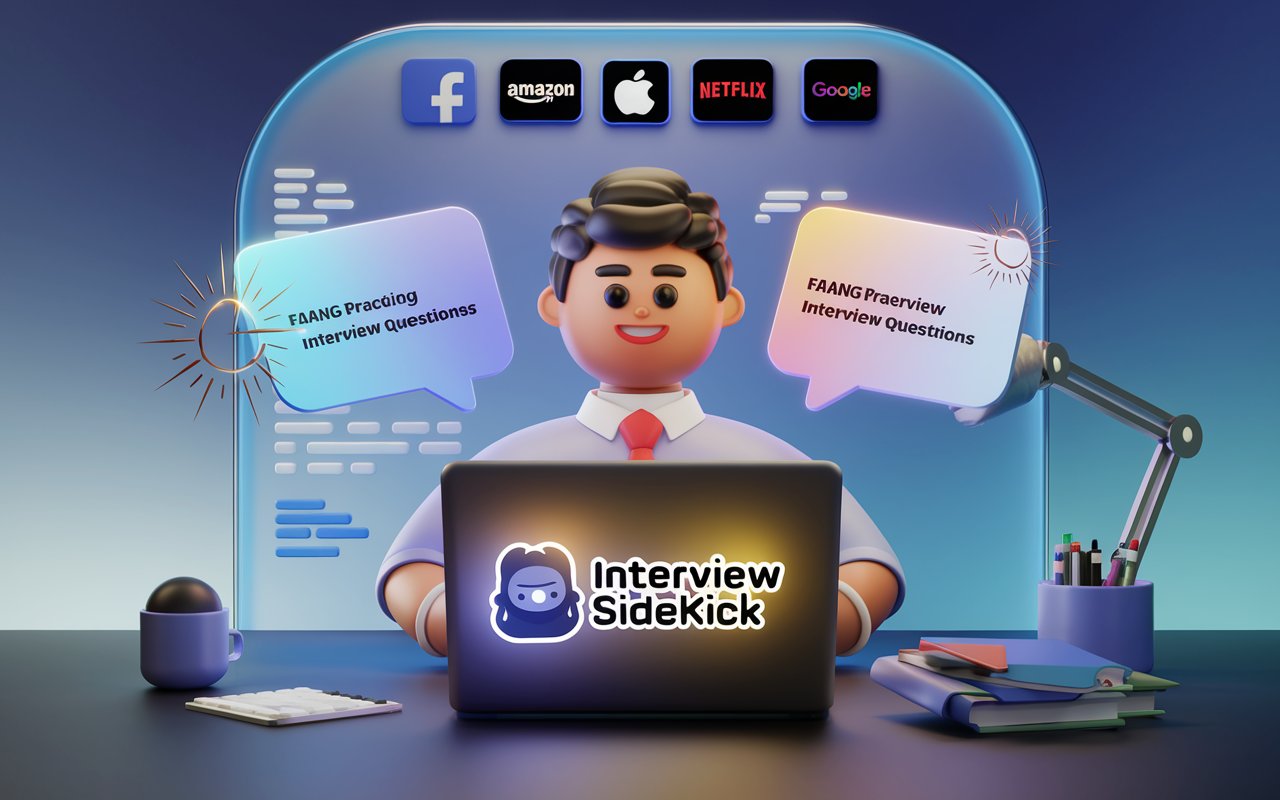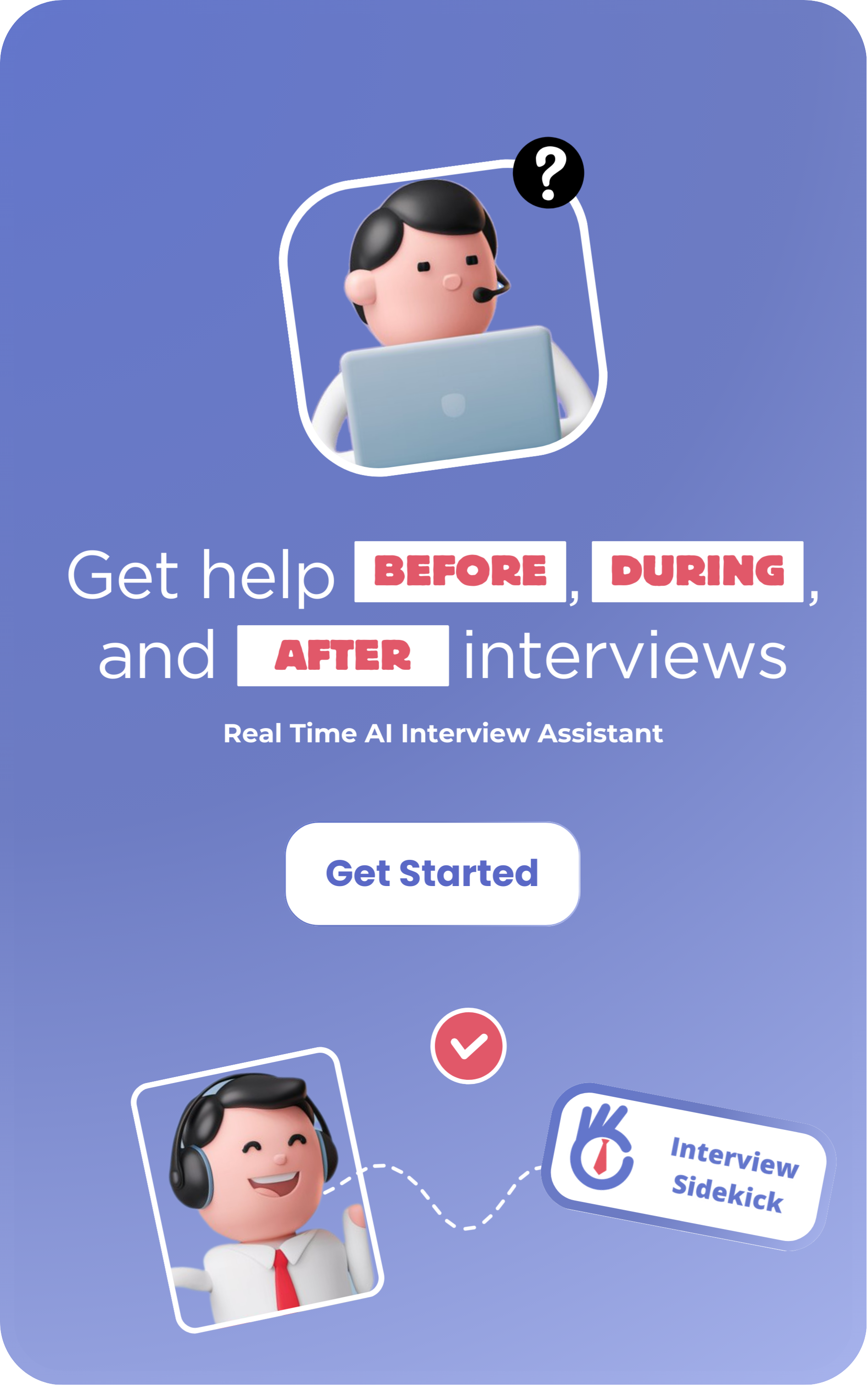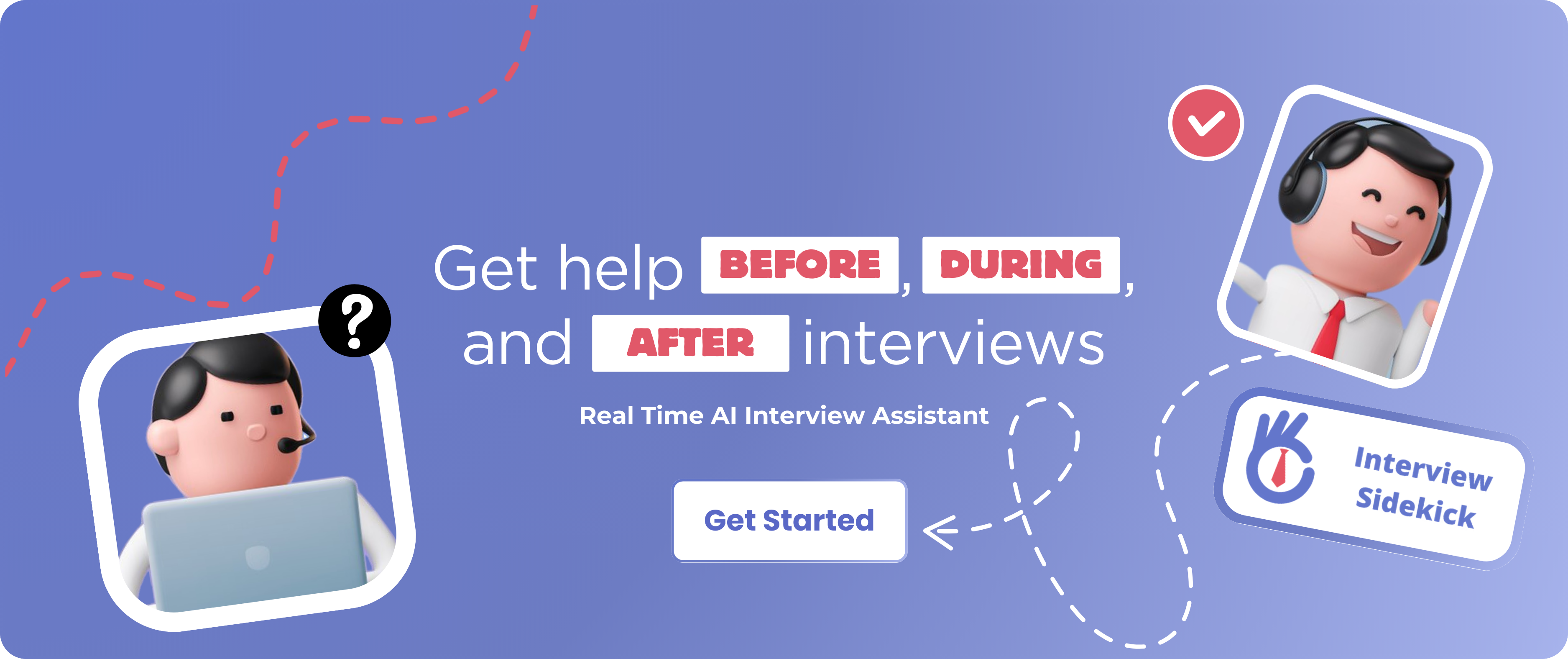3 Key Takeaways
• Prepare for the Classics: Review and practice answers to the top 10 most common FAANG interview questions, including those on algorithms, data structures, and problem-solving scenarios.
• Understand the STAR Method: Learn how to effectively use the STAR (Situation, Task, Action, Result) method to structure your responses and demonstrate your competencies clearly and concisely.
• Tailor Responses to FAANG Culture: Get insights into how to align your answers with the values and expectations of FAANG companies, focusing on innovation, leadership, and teamwork.
Amazon, Apple, Netflix, and Google – all these FAANG companies have their interviews as very competitive and intense. Similarly, over the initial months of 2024, the format of these interviews changes gradually, however, some questions are recurrent. This article examines the top 10 most common interview questions you’ll encounter at FAANG companies and provides comprehensive answers to each.
FAANG, F: Facebook (Meta)

Design a Social Media Feed
Question: “Design a social media feed that can handle millions of posts per day. How would you architect it?”
Answer:
- Architecture:
- Microservices: Separate services for user profiles, posts, likes, and comments.
- Data Storage: Use NoSQL databases like Cassandra for high write throughput and fast reads.
- Feed Generation:
- Content Delivery Network (CDN): Cache frequently accessed posts.
- Real-time Updates: Use WebSockets or push notifications for real-time updates.
- Scalability:
- Sharding: Distribute data across multiple servers.
- Load Balancers: Distribute incoming requests to multiple instances.
- Caching:
- Use Redis for caching user feeds and frequently accessed posts.
Handling Graph Data
Question: “How would you efficiently handle and query graph data in a social network?”
Answer:
- Graph Database: Use databases like Neo4j for storing and querying graph data.
- Indexing: Create indexes on user relationships for fast traversal.
- Graph Algorithms: Implement algorithms for the shortest path, recommendations, and community detection.
Behavioral Question: Conflict Resolution
Question: “Describe a time when you had a disagreement with a colleague. How did you resolve it?”
Answer:
- Situation: Detail the project or issue.
- Action: Describe steps taken, such as initiating a calm discussion, finding common ground, and reaching a compromise.
- Result: Highlight the positive outcome, such as improved team collaboration or project success.
Design a Real-time Chat Application
Question: “Design a real-time chat application with features like message delivery status and user presence.”
Answer:
- Architecture:
- WebSockets: For real-time communication.
- Message Queues: To handle message delivery and retries.
- Data Storage:
- NoSQL Databases: For storing chat histories and user statuses.
- Scalability:
- Sharding: Distribute messages and user data.
- Load Balancers: Distribute WebSocket connections.
Code Optimization
Question: “Optimize a function that processes a large dataset. What strategies would you use?”
Answer:
- Algorithm Improvement: Analyze and choose more efficient algorithms.
- Parallel Processing: Use multi-threading or distributed computing.
- Memory Usage: Optimize data structures to reduce memory footprint.
Behavioral Question: Product Innovation
Question: “Tell me about a time when you introduced a new feature or product improvement. How did you ensure its success?”
Answer:
- Situation: Describe the feature or improvement.
- Action: Explain research, development, and user feedback processes.
- Result: Highlight the impact, such as user engagement or performance metrics.
Security Considerations
Question: “How would you ensure the security of user data in a social media platform?”
Answer:
- Encryption: Use encryption for data at rest and in transit.
- Access Control: Implement role-based access controls and authentication mechanisms.
- Regular Audits: Conduct security audits and vulnerability assessments.
Algorithm Question: Merge Intervals
Question: “Write a function to merge overlapping intervals. How would you approach this problem?”
Answer:
- Sorting: Sort intervals by start times.
- Merging: Iterate through the sorted list and merge overlapping intervals.
- Implementation
def merge_intervals(intervals):
if not intervals:
return []
# Sort intervals based on the start time
intervals.sort(key=lambda x: x[0])
merged = [intervals[0]]
for interval in intervals[1:]:
last = merged[-1]
# Check if there is an overlap
if interval[0] <= last[1]:
last[1] = max(last[1], interval[1])
else:
merged.append(interval)
return merged
System Design: News Feed Algorithm
Question: “Design an algorithm to generate a personalized news feed for users.”
Answer:
- User Preferences: Track user interactions and preferences.
- Content Ranking: Use algorithms like collaborative filtering or matrix factorization to rank content.
- A/B Testing: Experiment with different algorithms and gather feedback to improve personalization.
Scaling User Notifications
Question: “How would you design a notification system to handle a high volume of notifications?”
Answer:
- Message Queues: Use systems like Kafka to handle high throughput.
- Batch Processing: Group notifications to reduce load.
- Push Notifications: Implement push notification services for timely delivery.
You should practice these questions to crack the Facebook interview. (First in FAANG Companies)
FAANG, A: Amazon

Design a Scalable E-Commerce Platform
Question: “Design an e-commerce platform that can handle a large volume of transactions and user interactions.”
Answer:
- Architecture:
- Microservices: Separate services for catalog, orders, payments, and user management.
- Load Balancers: Distribute requests across multiple servers.
- Data Storage:
- Database Sharding: To handle large volumes of transactions.
- Caching: Use Redis or Memcached to cache frequently accessed data.
- Scalability:
- Auto-Scaling: Automatically adjust resources based on traffic.
- Content Delivery Network (CDN): Distribute static content like images and product listings.
Behavioral Question: Customer Obsession
Question: “Give an example of how you’ve demonstrated ‘customer obsession’ in your previous work.”
Answer:
- Situation: Describe a project focused on customer satisfaction.
- Action: Explain how you gathered customer feedback, analyzed data, and implemented changes.
- Result: Highlight the improvements in customer satisfaction or product metrics.
Optimize a Database Query
Question: “Optimize a database query that is running slowly. What steps would you take?”
Answer:
- Indexing: Ensure indexes are created on columns used in WHERE and JOIN clauses.
- Query Analysis: Use the database’s query execution plan to identify bottlenecks.
- Database Design: Consider normalization or denormalization based on use case.
Design a Fault-Tolerant System
Question: “How would you design a system to ensure high availability and fault tolerance?”
Answer:
- Redundancy: Deploy services across multiple regions or availability zones.
- Failover Mechanisms: Implement automatic failover and backup systems.
- Health Checks: Continuously monitor system health and trigger failovers as needed.
Implement a Search Engine
Question: “Design a search engine to index and query a large volume of data. What are your key considerations?”
Answer:
- Indexing: Use inverted indexes to speed up search queries.
- Ranking Algorithms: Implement algorithms to rank search results based on relevance.
- Distributed Search: Use distributed systems like Elasticsearch for scalability.
Behavioral Question: Leadership
Question: “Describe a time when you took a leadership role in a project. What challenges did you face, and how did you overcome them?”
Answer:
- Situation: Outline the project and your leadership role.
- Action: Detail how you motivated the team, managed resources, and resolved issues.
- Result: Highlight the successful outcome and any improvements achieved.
Handling Large Data Sets
Question: “How would you process and analyze large data sets efficiently?”
Answer:
- Distributed Computing: Use frameworks like Apache Hadoop or Apache Spark.
- Data Partitioning: Split data into smaller chunks for parallel processing.
- Efficient Algorithms: Use algorithms optimized for large data sets.
Behavioral Question: Deliver Results
Question: “Tell me about a time when you delivered results under tight deadlines. How did you manage it?”
Answer:
- Situation: Describe the project and deadline.
- Action: Explain time management strategies, prioritization, and resource allocation.
- Result: Highlight the successful delivery of the project and any lessons learned.
Algorithm Question: Find the Median
Question: “Write an efficient algorithm to find the median of an unsorted array.”
Answer:
- Approach: Use the Quickselect algorithm for an average O(n) time complexity.
- Implementation
import random
def find_median(nums):
def partition(left, right, pivot_index):
pivot = nums[pivot_index]
nums[pivot_index], nums[right] = nums[right], nums[pivot_index]
store_index = left
for i in range(left, right):
if nums[i] < pivot:
nums[store_index], nums[i] = nums[i], nums[store_index]
store_index += 1
nums[right], nums[store_index] = nums[store_index], nums[right]
return store_index
def quickselect(left, right, k_smallest):
if left == right:
return nums[left]
pivot_index = random.randint(left, right)
pivot_index = partition(left, right, pivot_index)
if k_smallest == pivot_index:
return nums[k_smallest]
elif k_smallest < pivot_index:
return quickselect(left, pivot_index – 1, k_smallest)
else:
return quickselect(pivot_index + 1, right, k_smallest)
n = len(nums)
if n % 2 == 1:
return quickselect(0, n – 1, n // 2)
else:
return (quickselect(0, n – 1, n // 2 – 1) + quickselect(0, n – 1, n // 2)) / 2
Design a Recommendation System
Question: “How would you design a recommendation system for an e-commerce platform?”
Answer:
- Data Collection: Collect user interaction data, purchase history, and ratings.
- Algorithms: Use collaborative filtering, content-based filtering, or hybrid methods.
- Real-time Updates: Continuously update recommendations based on recent user behavior.
You should practice these questions to crack the Amazon interview. (Second in FAANG Companies)
FAANG, A: Apple

Design a Device Synchronization System
Question: “Design a system to synchronize data across multiple Apple devices.”
Answer:
- Architecture:
- Cloud Service: Use a central cloud service for data synchronization.
- Local Storage: Maintain local caches on devices for offline access.
- Conflict Resolution:
- Versioning: Implement version control to handle conflicts.
- Merge Algorithms: Use algorithms to merge changes from different devices.
- Security:
- Encryption: Encrypt data in transit and at rest.
- Authentication: Use strong authentication methods to secure user data.
Behavioral Question: Innovation
Question: “Describe a time when you introduced an innovative solution to a problem.”
Answer:
- Situation: Explain the problem and the need for innovation.
- Action: Detail the innovative solution you developed and implemented.
- Result: Highlight the impact of the solution on the project or organization.
Optimize a Mobile App Performance
Question: “How would you optimize the performance of a mobile application?”
Answer:
- Profiling: Use profiling tools to identify performance bottlenecks.
- Optimization Techniques:
- Lazy Loading: Load data on demand to reduce initial load time.
- Caching: Implement caching strategies to minimize data fetching.
- Testing:
- Load Testing: Test app performance under various load conditions.
- User Feedback: Gather feedback to identify performance issues.
Design a Security System for iCloud
Question: “How would you design a security system for iCloud to protect user data?”
Answer:
- Encryption: Use end-to-end encryption for data security.
- Authentication: Implement multi-factor authentication for user access.
- Monitoring: Regularly audit access logs and security events.
Behavioral Question: Problem-Solving
Question: “Tell me about a challenging problem you faced and how you solved it.”
Answer:
- Situation: Describe the problem and its context.
- Action: Explain your problem-solving approach and the steps taken.
- Result: Highlight the successful resolution and any lessons learned.
Algorithm Question: Find the Longest Substring
Question: “Write a function to find the longest substring without repeating characters.”
Answer:
- Approach: Use a sliding window technique.
- Implementation
def longest_substring_without_repeating(s: str) -> int:
char_map = {} # Dictionary to store the last position of each character
left = 0 # Left boundary of the current window
max_length = 0 # Maximum length of substring without repeating characters
# Iterate over the string with the right boundary of the window
for right in range(len(s)):
# If the character is already in the map, move the left boundary
if s[right] in char_map:
left = max(left, char_map[s[right]] + 1)
# Update the last position of the current character
char_map[s[right]] = right
# Calculate the length of the current window and update max_length
max_length = max(max_length, right – left + 1)
return max_length
System Design: Voice Assistant
Question: “Design a voice assistant system that can understand and respond to user commands.”
Answer:
- Speech Recognition: Use NLP models to convert speech to text.
- Intent Recognition: Implement machine learning models to understand user intents.
- Response Generation: Generate responses based on recognized intents and context.
Behavioral Question: Team Collaboration
Question: “Describe a time when you worked as part of a team to achieve a goal.”
Answer:
- Situation: Explain the team project and your role.
- Action: Detail your contributions and collaboration with team members.
- Result: Highlight the successful achievement of the goal and team dynamics.
Algorithm Question: Two Sum
Question: “Write a function to find two numbers in an array that add up to a specific target.”
Answer:
- Approach: Use a hash table for O(n) time complexity.
- Implementation
def two_sum(nums, target):
num_map = {} # Dictionary to store the index of each number encountered
# Iterate over the list with index and value
for i, num in enumerate(nums):
complement = target – num # Calculate the complement value needed to reach the target
# Check if the complement exists in num_map
if complement in num_map:
return [num_map[complement], i] # Return the indices of the complement and the current number
# Store the index of the current number in num_map
num_map[num] = i
return [] # Return an empty list if no solution is found
Design a Privacy Feature
Question: “How would you design a privacy feature for an app to give users control over their data?”
Answer:
- User Controls: Provide users with options to manage data sharing and visibility.
- Data Encryption: Encrypt sensitive data to protect user privacy.
- Transparency: Inform users about data collection practices and provide clear consent options.
You should practice these questions to crack the Apple interview. (Third in FAANG Companies)
FAANG, N: Netflix

Design a Streaming Service
Question: “Design a video streaming service that can handle high traffic and provide a smooth user experience.”
Answer:
- Architecture:
- Microservices: Separate services for video encoding, streaming, and user management.
- CDN: Use a Content Delivery Network to reduce latency and handle high traffic.
- Scalability:
- Load Balancers: Distribute incoming requests to multiple servers.
- Auto-Scaling: Automatically adjust resources based on demand.
- Caching:
- Edge Caching: Cache frequently accessed videos at edge locations.
Behavioral Question: Innovation
Question: “Give an example of a time when you developed an innovative solution to a problem.”
Answer:
- Situation: Describe the problem and the need for innovation.
- Action: Explain the innovative solution and how it was implemented.
- Result: Highlight the impact of the solution on the project or organization.
Design a Recommendation Engine
Question: “Design a recommendation engine for a streaming platform.”
Answer:
- Data Collection: Gather user interaction data, viewing history, and ratings.
- Algorithms: Use collaborative filtering, content-based filtering, or hybrid methods.
- Real-time Updates: Continuously update recommendations based on user behavior.
Behavioral Question: Team Dynamics
Question: “Describe a time when you worked with a team to overcome a challenge.”
Answer:
- Situation: Explain the challenge and your team’s role.
- Action: Detail how the team collaborated and the strategies used.
- Result: Highlight the successful resolution and team achievements.
Optimize a Video Streaming Algorithm
Question: “How would you optimize video streaming quality and reduce buffering?”
Answer:
- Adaptive Bitrate Streaming: Use protocols like HLS or DASH to adjust video quality based on network conditions.
- Pre-fetching: Buffer video segments ahead of time to reduce buffering.
- CDN: Use a Content Delivery Network to minimize latency and improve streaming performance.
Algorithm Question: Longest Common Subsequence
Question: “Write a function to find the longest common subsequence of two strings.”
Answer:
- Approach: Use dynamic programming for an O(m*n) time complexity solution.
- Implementation
def longest_common_subsequence(text1: str, text2: str) -> int:
m, n = len(text1), len(text2) # Lengths of the two input strings
dp = [[0] * (n + 1) for _ in range(m + 1)] # Create a 2D DP table initialized with 0
# Fill the DP table
for i in range(1, m + 1):
for j in range(1, n + 1):
if text1[i – 1] == text2[j – 1]:
dp[i][j] = dp[i – 1][j – 1] + 1 # Characters match, extend the LCS by 1
else:
dp[i][j] = max(dp[i – 1][j], dp[i][j – 1]) # Take the max of excluding one character either from text1 or text2
return dp[m][n] # The length of the longest common subsequence
Design a Scalable Notification System
Question: “Design a notification system that can handle high volumes of notifications.”
Answer:
- Message Queues: Use systems like Kafka or RabbitMQ to handle high throughput.
- Batch Processing: Group notifications to reduce load and improve efficiency.
- Real-time Delivery: Implement push notification services for timely delivery.
Behavioral Question: Conflict Resolution
Question: “Tell me about a time when you resolved a conflict within your team.”
Answer:
- Situation: Describe the conflict and its context.
- Action: Explain your approach to resolving the conflict, such as mediation or negotiation.
- Result: Highlight the resolution and any improvements in team dynamics.
Design a Video Encoding Pipeline
Question: “How would you design a video encoding pipeline for a streaming service?”
Answer:
- Encoding: Use codecs like H.264 or H.265 for efficient compression.
- Scaling: Implement parallel processing to handle large volumes of videos.
- Storage: Store encoded videos in a distributed file system or cloud storage.
Behavioral Question: Achieving Goals
Question: “Describe a time when you achieved a challenging goal. How did you manage to accomplish it?”
Answer:
- Situation: Outline the goal and its challenges.
- Action: Detail your strategy, planning, and execution.
- Result: Highlight the successful achievement of the goal and any key learnings.
You should practice these questions to crack the Netflix interview. (Fourth in FAANG Companies)
FAANG, G: Google

Design a Search Engine
Question: “Design a search engine that can index and query web pages efficiently.”
Answer:
- Crawling: Use distributed crawlers to gather web pages.
- Indexing: Build inverted indexes for fast querying.
- Ranking: Implement ranking algorithms like PageRank for search result relevance.
Behavioral Question: Problem-Solving
Question: “Describe a challenging problem you solved and the approach you took.”
Answer:
- Situation: Explain the problem and its impact.
- Action: Detail the problem-solving steps and techniques used.
- Result: Highlight the solution’s effectiveness and any improvements.
Optimize a Data Processing Pipeline
Question: “How would you optimize a data processing pipeline to handle large-scale data?”
Answer:
- Distributed Computing: Use frameworks like Apache Beam or Apache Flink.
- Data Partitioning: Split data into manageable chunks for parallel processing.
- Performance Tuning: Optimize algorithms and system configurations for efficiency.
Design a Scalable API
Question: “Design an API that can handle a large number of requests per second.”
Answer:
- Architecture:
- Load Balancers: Distribute requests across multiple servers.
- Microservices: Implement services for different functionalities.
- Caching:
- API Caching: Cache frequent responses using systems like Redis.
- Rate Limiting:
- Implement rate limiting to prevent abuse and ensure fair usage.
Behavioral Question: Leadership
Question: “Describe a time when you led a team through a difficult project.”
Answer:
- Situation: Outline the project and challenges faced.
- Action: Explain your leadership approach, including communication, delegation, and problem-solving.
- Result: Highlight the successful completion of the project and any lessons learned.
Algorithm Question: Graph Traversal
Question: “Write an algorithm to perform a depth-first search (DFS) on a graph.”
Answer:
- Approach: Use recursion or a stack to implement DFS.
- Implementation
def depth_first_search(graph, start):
visited = set() # Set to track visited vertices
stack = [start] # Stack to manage the DFS traversal
while stack:
vertex = stack.pop() # Retrieve and remove the last vertex from the stack
if vertex not in visited:
visited.add(vertex) # Mark the vertex as visited
# Add all unvisited neighbors to the stack
stack.extend(neighbor for neighbor in graph[vertex] if neighbor not in visited)
return visited
Design a Real-Time Analytics System
Question: “Design a real-time analytics system that processes and analyzes streaming data.”
Answer:
- Data Ingestion: Use systems like Apache Kafka for data ingestion.
- Processing: Implement real-time processing using tools like Apache Flink.
- Storage: Store results in a fast, scalable database like Bigtable or Cassandra.
Behavioral Question: Conflict Management
Question: “Tell me about a time when you managed a conflict between team members.”
Answer:
- Situation: Describe the conflict and its context.
- Action: Detail your approach to managing and resolving the conflict.
- Result: Highlight the resolution and improvements in team dynamics.
Design a Scalable File Storage System
Question: “Design a file storage system that can handle a large volume of files with high availability.”
Answer:
- Architecture:
- Distributed Storage: Use a distributed file system like Google File System (GFS).
- Replication: Implement replication to ensure data availability and fault tolerance.
- Consistency:
- Ensure strong consistency and handle data synchronization.
Behavioral Question: Delivering Results
Question: “Describe a time when you delivered results despite facing significant obstacles.”
Answer:
- Situation: Outline the obstacles and project goals.
- Action: Explain your approach to overcoming challenges and delivering results.
- Result: Highlight the successful outcome and any key takeaways.
You should practice these questions to crack the Google interview. (Last in FAANG Companies)
Related
Top 21 Interview Tips to Make a Great First Impression During Your Job Interview
Top Interview Skills to Get a Job in 2024
How to Prepare for a FAANG Software Engineering Job: From Mock Interviews to Technical Tips 2024
Conclusion (FAANG Interview Questions)
These questions and answers reflect a mix of technical, behavioral, and system design challenges specific to each FAANG company. Preparing for these will help you demonstrate your problem-solving skills, technical expertise, and alignment with each company’s culture and values.
Amazon interview is designed to find people who live the Leadership Principles and can thrive in a fast-paced environment. Knowing and preparing for the questions you’ll be asked can make a big difference. This blog covers common Amazon interview questions and how to answer them, on problem-solving, technical skills, leadership principles, and customer obsession. We’ll go through all 16 Leadership Principles, example questions, and answers.




